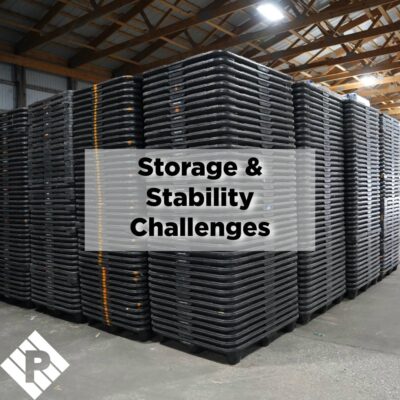Working in a warehouse is no easy task. In fact, warehouse employees are nearly twice as likely to become injured at work than workers in the general population, according to statistics from the Bureau of Labor Statistics. As the cause behind most of these injuries, overexertion costs the industry many employee hours and hours of lost productivity each year.
By choosing more ergonomic warehouse equipment and incorporating it into the daily lives of your workers, you can help:
- Reduce workplace injuries
- Improve productivity
Furthermore, because of the many benefits they provide, ergonomic equipment will likely pay for itself in the long run with improved outputs and fewer workplace injuries. In this article, we will outline a few of the best ways to choose ergonomic equipment that meets health and safety guidelines, discuss a few potential options, and explore more ways in which proper ergonomics can help your business thrive. Read on to learn more.
What is Ergonomics
The study of people’s efficiency in their working environment, ergonomics helps us create more productive, healthier, and efficient workspaces for employees.
Cal/OSHA Ergonomic Guidelines
Targeted at helping warehouse and other physical labor industries, Cal/OSHA ergonomic guidelines are focused on what is known as the “power zone.” Located close to the body and between the mid-thigh and mid-chest areas on our bodies, the power zone is where the arms and back can lift the most weight with the least amount of effort. When warehouse employees keep the material or products they are working with close to their body, they reduce their risk of injury significantly.
Positioning pallets loads at the ideal power zone height, allows workers to lift and lower easily and from a position of strength. OSHA ergonomic guidelines specifically recommend the use of several pieces of equipment, such as tilt stands for smaller items and powered tilters or lift tables for larger items.
Potential Equipment
To best assist workers in their efforts to work in an ergonomic space, there are several pieces of equipment facility owners and operators should consider. We’ve compiled a brief list below.
Hydraulic Worktables
With hydraulic worktables, workers can vary the table height to their specific needs, allowing the material to be placed at the most ideal ergonomic distance from workers regardless of their size, or the size of the material. Easily adjustable hydraulic tables promote compliance regarding your facility’s ergonomic practices.
Tilt Tables
Tilt tables are also a great way to help increase worker safety and productivity. Placing products within easy reach, these tables prevent workers from having to repeatedly twist of bend over to reach.
Lift Tables
With the ability to solve hundreds of different uses in manufacturing, warehousing, and distributing facilities, lift tables can also hep ensure worker safety and streamlined processes.
As an efficient way for warehouse staff to load or unload pallets, these tables always maintain the position of the load in the workers power zone. Contrary to unassisted pallet loading, lift tables prevent workers from repeatedly bending down, also reducing their risk of potential strain.
You can integrate any of these ergonomic machines into product assembly, offloading conveyors, extreme load dimensions, or to bridge levels.
Best Practices Training For Ergonomics
Many problems with operational efficiencies can be solved through proper ergonomics in a workspace. Accordingly, an investment in ergonomics is usually an investment in both productivity and profitability as well.
Make sure your workers are well educated in best ergonomic practices, such as knowing about the power zone and other ways to reduce strain on the lower back and knees when lifting heavy loads. With regular training and integration, employees can often help prevent injuries for their selves and others for safer, more productive working environments.
How Plastic Pallet Pros is Helping
Our pallets are also helping you reach ergonomic standards at your warehouse, distribution center, or other facility. Lightweight and with smooth surfaces that are easy to handle, plastic pallets are safer for workers to frequently use and are more reliable, reducing injuries when compared to wooden pallets. They are also available in many configurations, including rackable, nestable, and more.
Each option of plastic pallet is also designed to be perfectly balanced and hold up to heavy use. Besides splinters, rust, or protruding nails, wooden pallets are heavy and can take significant damage over time, making them less than ideal for workers to manipulate.
Our team at Plastic Pallet Pros wants to help you create safer, more productive workplaces for you and your employees. If you’d like to learn more about ergonomic best practices, you can read our guideline on OSHA mandated safety practices, or upgrade your pallets today.
Contact our team to learn more about which options best suit your needs or peruse our stock. Either way, we look forward to helping you and your workers stay safe, healthy, and more productive.







